
Link building is a crucial factor in enhancing website rankings and authority. To gain deeper insights into the current practices, preferences, and challenges in link-building, we delved into a comprehensive analysis of data gathered from the latest link-building statistics. This research covers different aspects, such as the effectiveness of different techniques and preferred metrics for link quality, the use of AI tools, and predictions of the role of links in search algorithms.
This overview aims to present the current practices and views in the SEO industry, highlighting both common trends and diverse approaches in link building. It provides a clear picture of how professionals navigate this complex and competitive area of digital marketing.
The latest trends and statistics in link-building show a complex mix of strategies and preferences. These link-building developments provide insights into the future of link-building strategy, including the changing roles of backlinks and content and the growing influence of AI and social media.
The views on the effectiveness of link building in influencing organic search rankings display a varied spectrum, leaning towards high effectiveness, and on a scale of 1-10, a notable 20% rate its effectiveness at the highest level, 10, underscoring strong confidence in link building as a crucial SEO tactic.
Most responses cluster towards the higher end of the scale, with 26% choosing 8 and 19% opting for 7.
Interestingly, the lower end of the scale sees minimal support, with only a combined 4% rating its effectiveness as low (1-4).
The views on the effectiveness of link building in influencing organic search rankings display a varied spectrum, leaning towards high effectiveness, and on a scale of 1-10, a notable 20% rate its effectiveness at the highest level, 10, underscoring strong confidence in link building as a crucial SEO tactic.
Most responses cluster towards the higher end of the scale, with 26% choosing 8 and 19% opting for 7.
Interestingly, the lower end of the scale sees minimal support, with only a combined 4% rating its effectiveness as low (1-4).
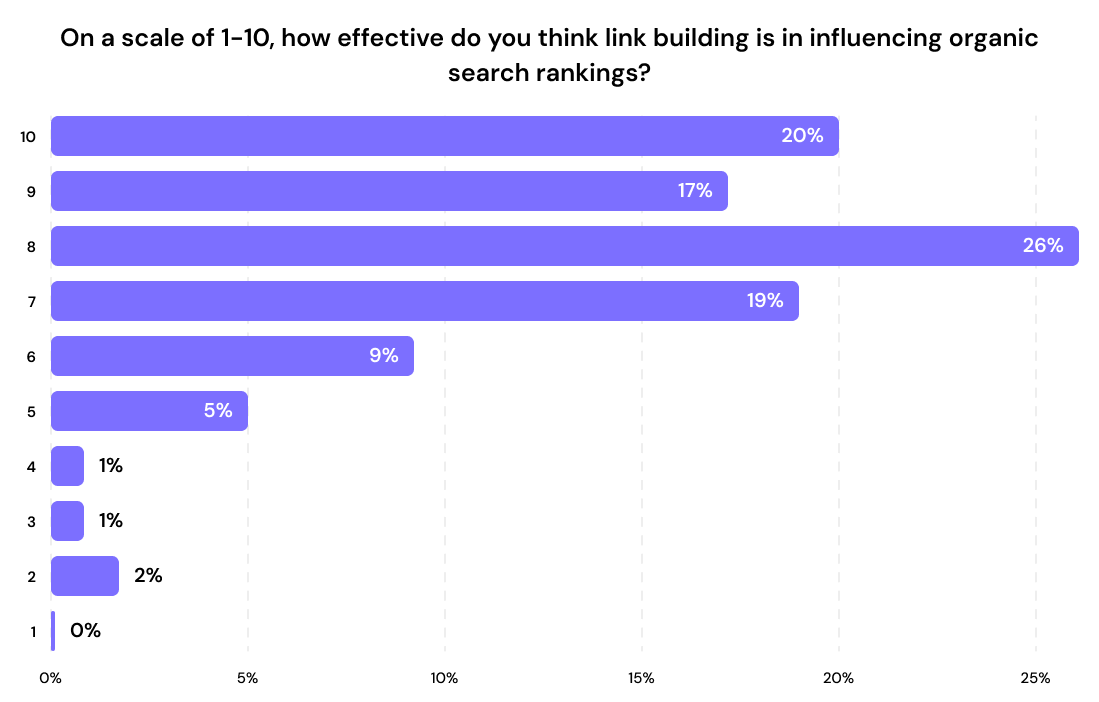
The debate around prioritizing backlinks or content creation has been ongoing. According to the latest data, professionals in this field are almost evenly divided in such priorities.
Around 47.50% of them give equal importance to both backlinks and content, emphasizing the importance of a balanced approach to SEO where the quality of content and the strength of backlinks are crucial for achieving success.
However, a significant 40% of professionals tend to focus primarily on backlinks. Interestingly, a smaller fraction of 12.50% takes a more casual approach towards backlinks, either indicating confidence in the inherent value of their content or focusing on other SEO tactics.
Understanding the time investment required to secure a single link is crucial for link builders. The data states that 32% of link-building professionals spend 1-2 hours for a single link, while 24% may require more time, with 3-5 hours per link. Only a tiny percentage of link builders (7%) report spending less than an hour per link.
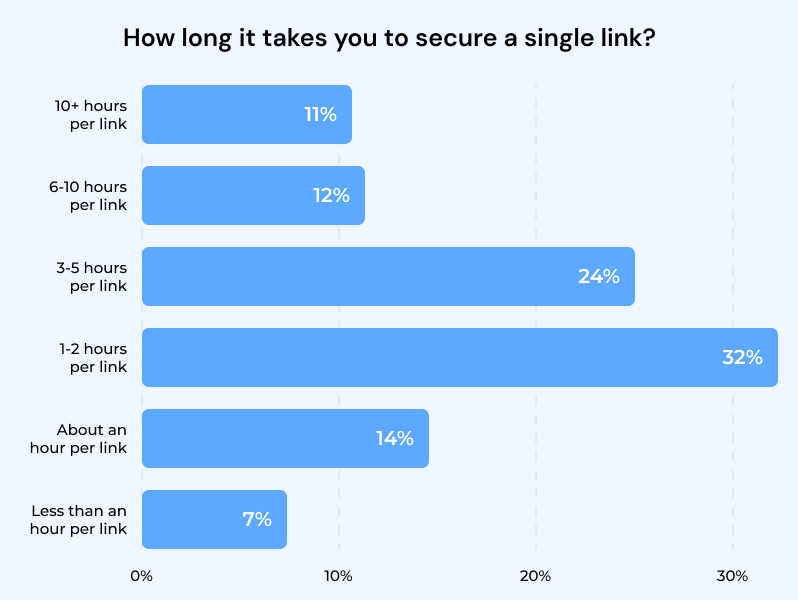
Understanding the time investment required to secure a single link is crucial for link builders. The data states that 32% of link-building professionals spend 1-2 hours for a single link, while 24% may require more time, with 3-5 hours per link. Only a tiny percentage of link builders (7%) report spending less than an hour per link.
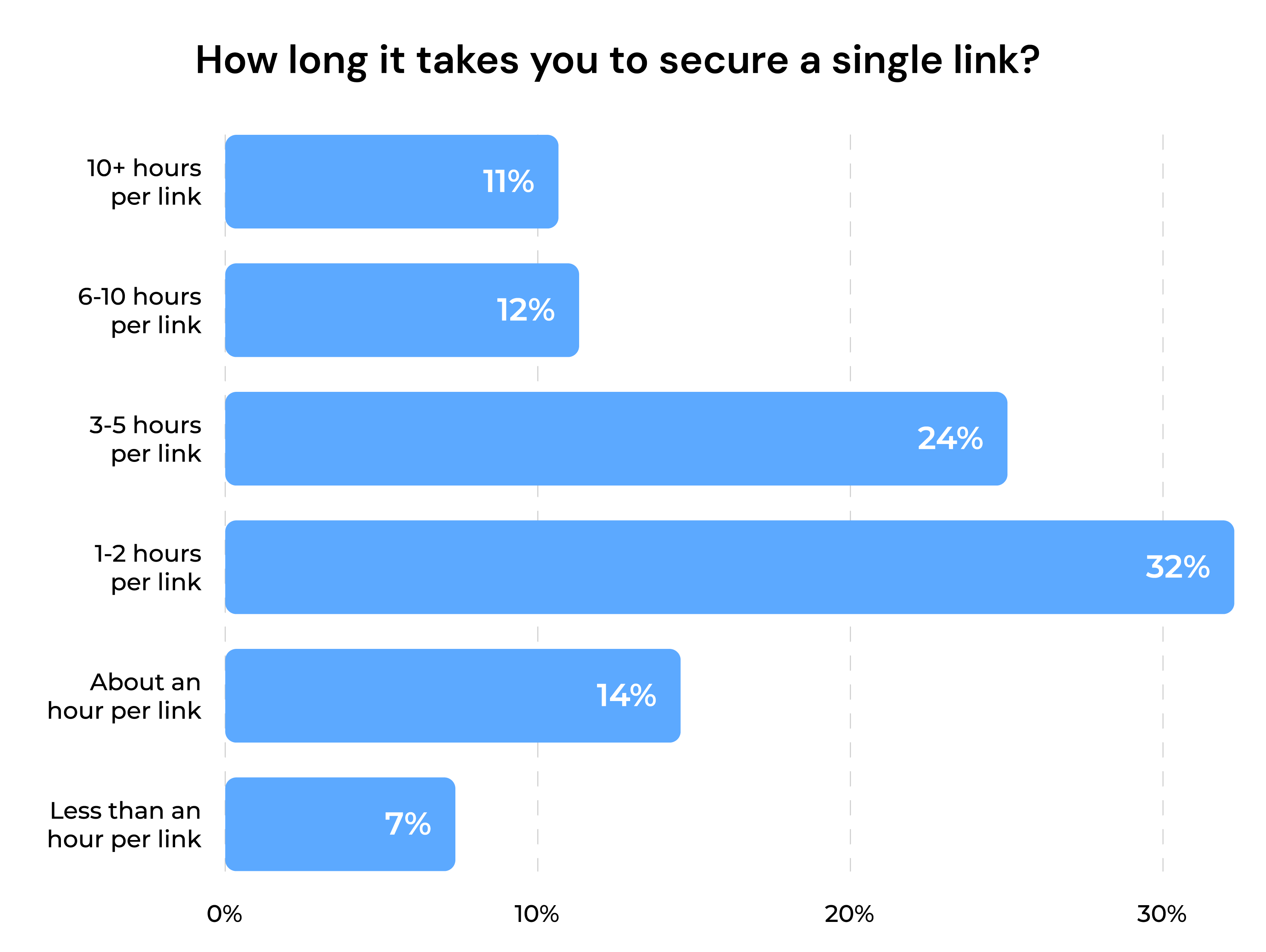
A striking 80% of SEO professionals agree that brand mentions significantly impact organic search rankings, recognizing the indirect benefits that brand mentions bring to SEO. Even without a physical hyperlink, these mentions are seen by search engines as signals of authority and relevance. They help build brand awareness and credibility, which search engines value in their algorithms.
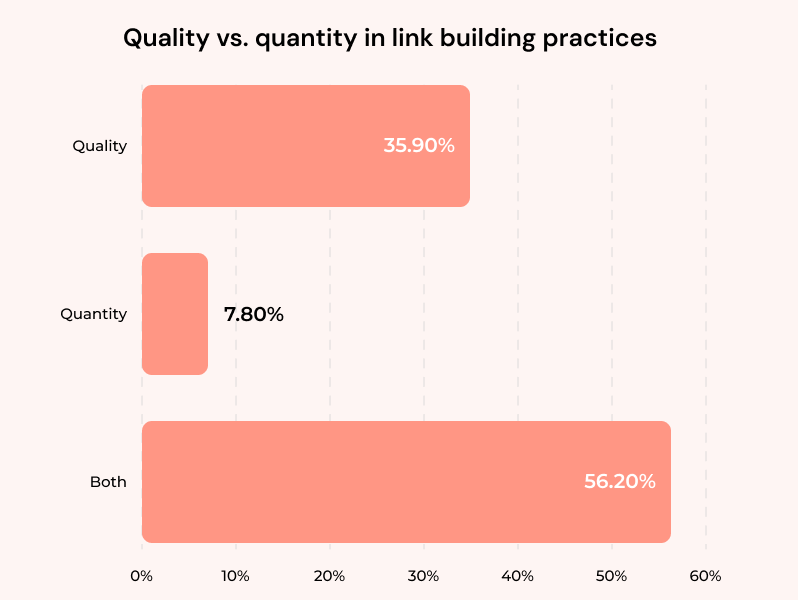
Regarding the quality and quantity of links, SEO professionals showcase various preferences. A substantial 56.2% advocate for a balanced approach.
On the other hand, 35.9% prioritize quality, aligning with the current trend that values links from reputable and relevant sources, highlighting that a few high-caliber links are more beneficial than numerous low-quality ones.
Contrarily, a smaller group of 7.8% still focuses on the sheer volume of backlinks, believing in the power of quantity to boost SEO performance.
Regarding the quality and quantity of links, SEO professionals showcase various preferences. A substantial 56.2% advocate for a balanced approach.
On the other hand, 35.9% prioritize quality, aligning with the current trend that values links from reputable and relevant sources, highlighting that a few high-caliber links are more beneficial than numerous low-quality ones.
Contrarily, a smaller group of 7.8% still focuses on the sheer volume of backlinks, believing in the power of quantity to boost SEO performance.
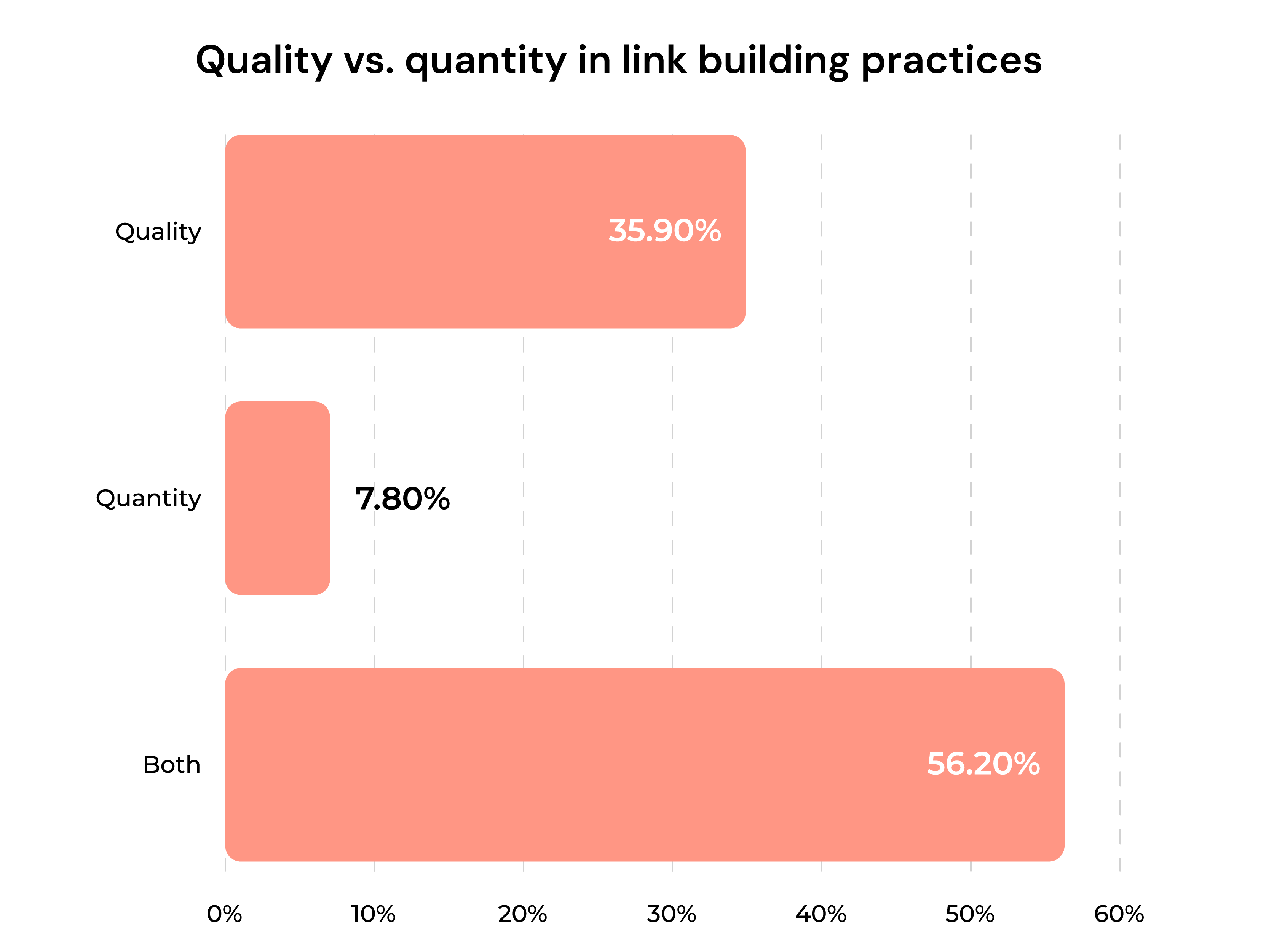
Regarding the quality and quantity of links, SEO professionals showcase various preferences. A substantial 56.2% advocate for a balanced approach.
On the other hand, 35.9% prioritize quality, aligning with the current trend that values links from reputable and relevant sources, highlighting that a few high-caliber links are more beneficial than numerous low-quality ones.
Contrarily, a smaller group of 7.8% still focuses on the sheer volume of backlinks, believing in the power of quantity to boost SEO performance.

The SEO community presents a spectrum of opinions regarding the influence of nofollow links on authority and rankings, with a slight majority leaning towards their positive impact. According to the data, 54% of professionals believe that nofollow links contribute to a website’s authority and rankings, challenging the conventional view of their ineffectiveness.
Meanwhile, a significant 34% reside in the realm of uncertainty, marked as ‘maybe.’ Contrasting these views, a minority of 12% firmly believes that nofollow links hold no value in enhancing a site’s SEO.
This data is further supported by other surveys of link builders, where almost 90% of them state that nofollow links impact search rankings.
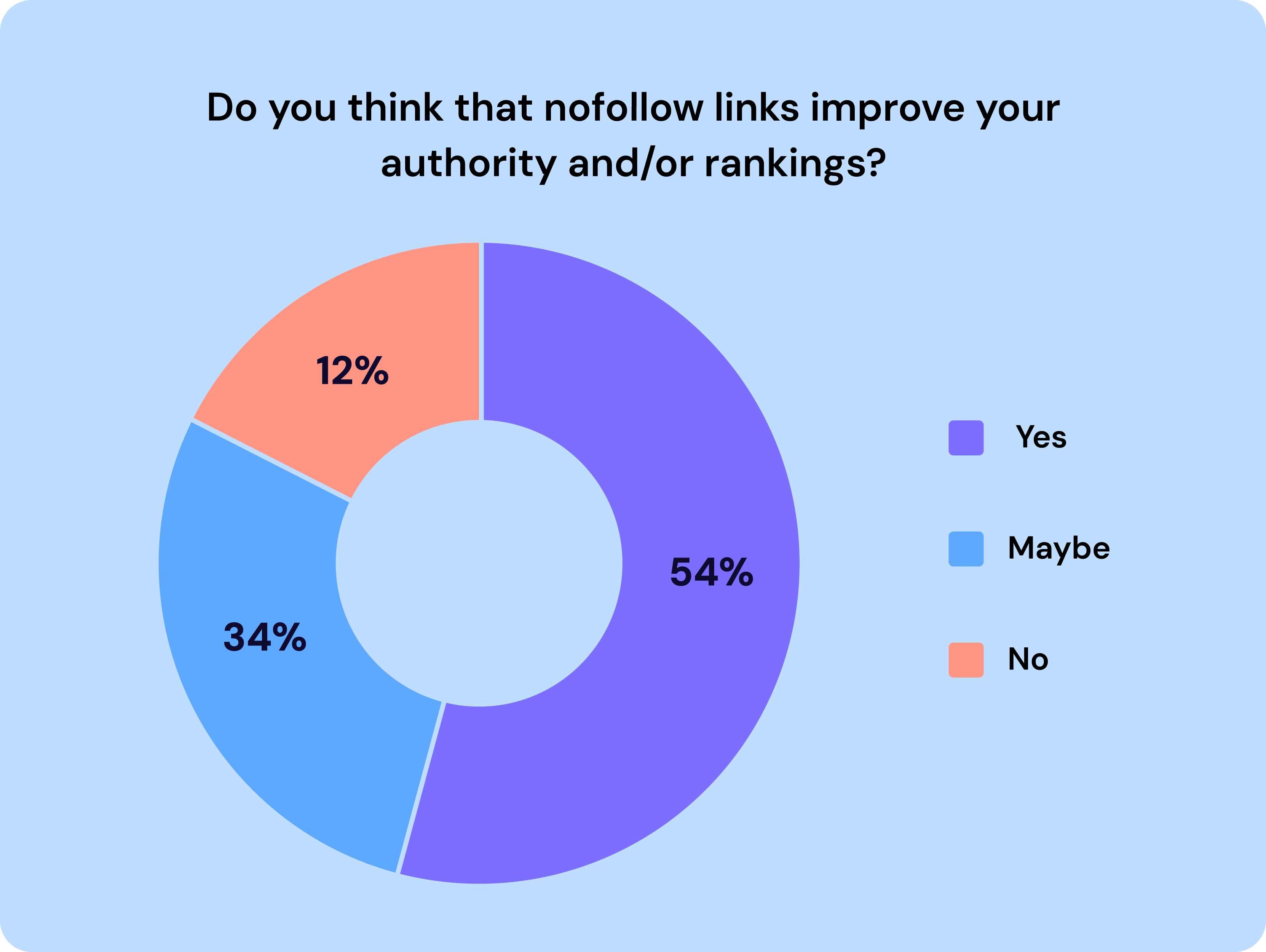
According to the data, 54% of professionals believe that nofollow links contribute to a website’s authority and rankings, challenging the conventional view of their ineffectiveness.
Meanwhile, a significant 34% reside in the realm of uncertainty, marked as ‘maybe.’ Contrasting these views, a minority of 12% firmly believes that nofollow links hold no value in enhancing a site’s SEO.
This data is further supported by other surveys of link builders, where almost 90% of them state that nofollow links impact search rankings.

The role of social media in enhancing link-building efforts is evident from the data, which shows a noticeable difference in the success rate based on its usage.
Link builders utilizing social media platforms achieve an average of 16.81% in link acquisition, while those not leveraging social media see a slightly lower rate at 13.78%.
By providing a channel for broader content dissemination and networking, social media emerges as a beneficial complement to traditional link-building strategies, enhancing the chances of gaining valuable backlinks.
The adoption of AI tools in link-building strategies is on the rise, as indicated by 47.33% of SEO professionals planning to use such tools in the next 12 months, signaling a shift towards more technologically advanced methods in SEO practices.
Meanwhile, 38.67% remain hesitant, possibly due to concerns about the effectiveness, cost, or complexity of integrating AI into existing workflows.
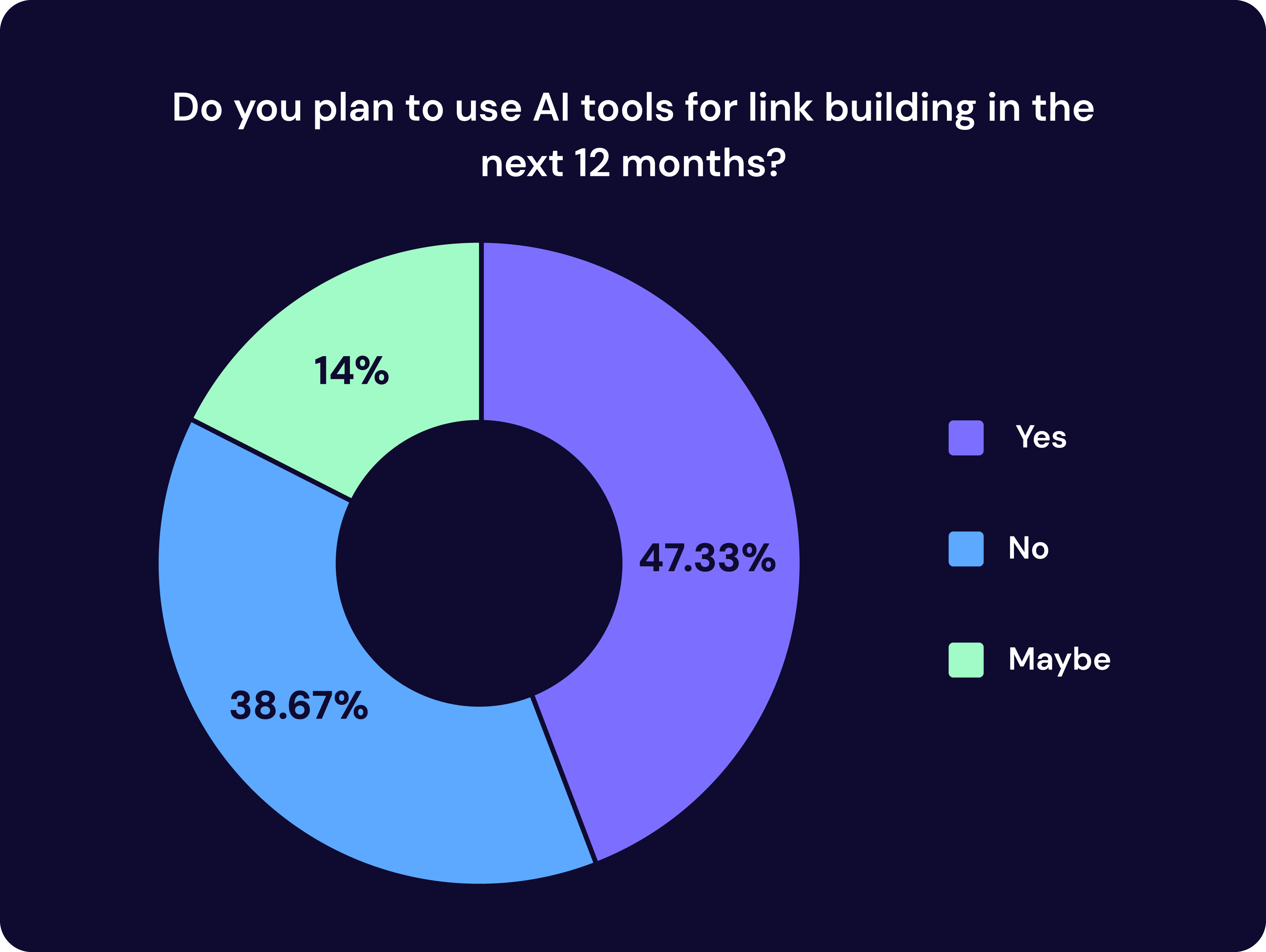

The adoption of AI tools in link-building strategies is on the rise, as indicated by 47.33% of SEO professionals planning to use such tools in the next 12 months, signaling a shift towards more technologically advanced methods in SEO practices.
Meanwhile, 38.67% remain hesitant, possibly due to concerns about the effectiveness, cost, or complexity of integrating AI into existing workflows.
Link builders have rated creating content as the most effective tactic for building links, rating it at 3.36, leaving behind guest posting and other tactics.
The effectiveness of content is further supported by the fact that 28% of link builders would choose content creation as their primary link-building method, leaving guest posting and other methods behind.
Moreover, 86% of these professionals acknowledge that the objective of acquiring links primarily drives their content creation strategies. This statistic highlights a significant trend in the digital marketing world where content is not just crafted for engagement or information but is also strategically designed to attract backlinks. This approach underscores the recognition of the dual role of content – as a valuable asset to engage readers and as a tool to enhance a site’s backlink profile.
The duration of outreach efforts for a content campaign varies widely. The majority, with 36%, focus their outreach efforts within a 3-4 week window.
Notably, 25% adopt an open-ended approach, continuing outreach with no fixed end date, a strategy that values sustained, long-term efforts.
In contrast, shorter campaigns of 1-2 weeks are preferred by 17%, while only 4% limit their outreach to just one week. Fewer, with 12% and 6%, extend their efforts to 5-6 weeks and 7-8 weeks, respectively.
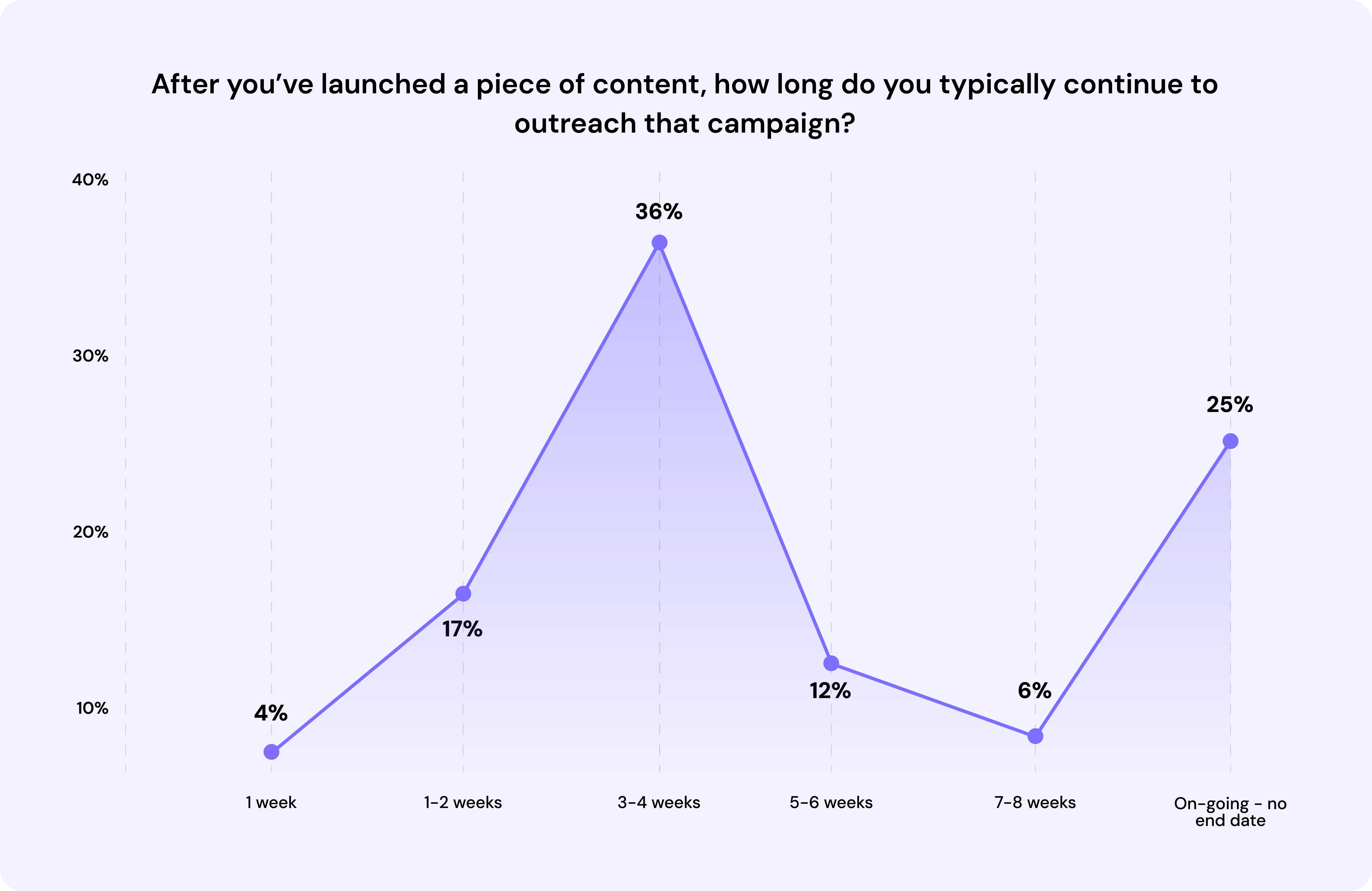
The content-led link-building process presents various challenges, with different aspects posing distinct hurdles. As 40% of respondents indicated, getting links from outreach targets is the most prominent challenge. This challenge is followed by the creative aspect, where 20% find creating campaign ideas the most daunting.
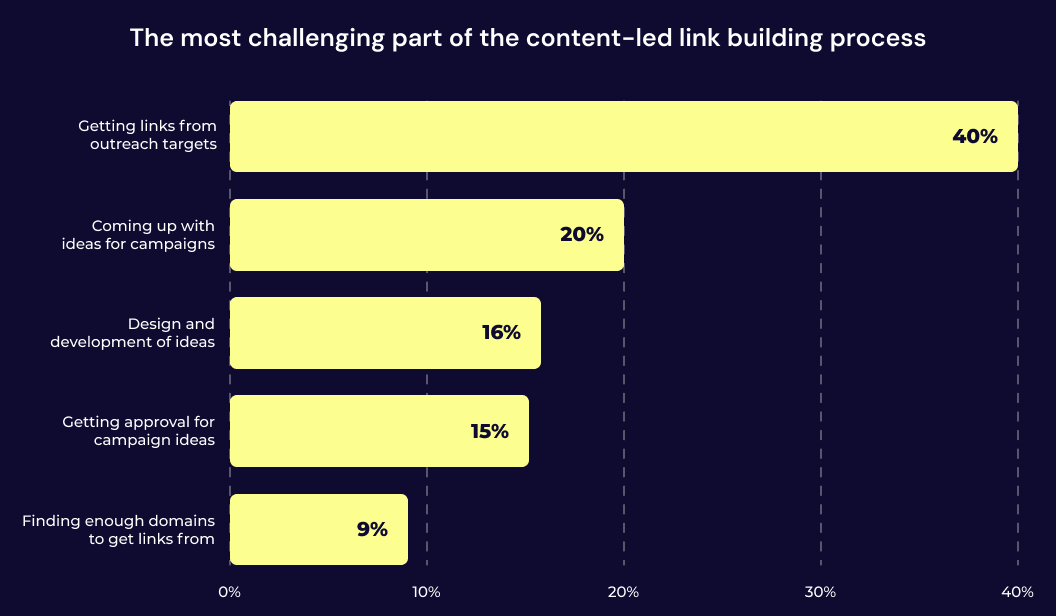
The content-led link-building process presents various challenges, with different aspects posing distinct hurdles. As 40% of respondents indicated, getting links from outreach targets is the most prominent challenge. This challenge is followed by the creative aspect, where 20% find creating campaign ideas the most daunting.
In the pursuit of generating links, link builders prefer certain types of content, with long-form, report-style content leading at 56%. This format’s depth and comprehensiveness likely contribute to its high effectiveness in attracting backlinks.
Surprisingly close, interactive content follows with 42%. Blog posts remain popular at 39%, underscoring their continued relevance in attracting links through regular, insightful updates.
Lesser-used strategies include stunts (11%), real products (8%), videos (8%), fake products, and virtual reality, at 4% and 0%, respectively.
The practice of buying links, a topic often debated in link building, garners mixed opinions regarding its impact on rankings. Most, 69% of SEO professionals, believe purchasing links can positively influence rankings.
However, 31% oppose this view, likely reflecting concerns about the potential risks and ethical implications, as well as the long-term ineffectiveness of such a strategy in light of search engines’ evolving algorithms that penalize unnatural link patterns.
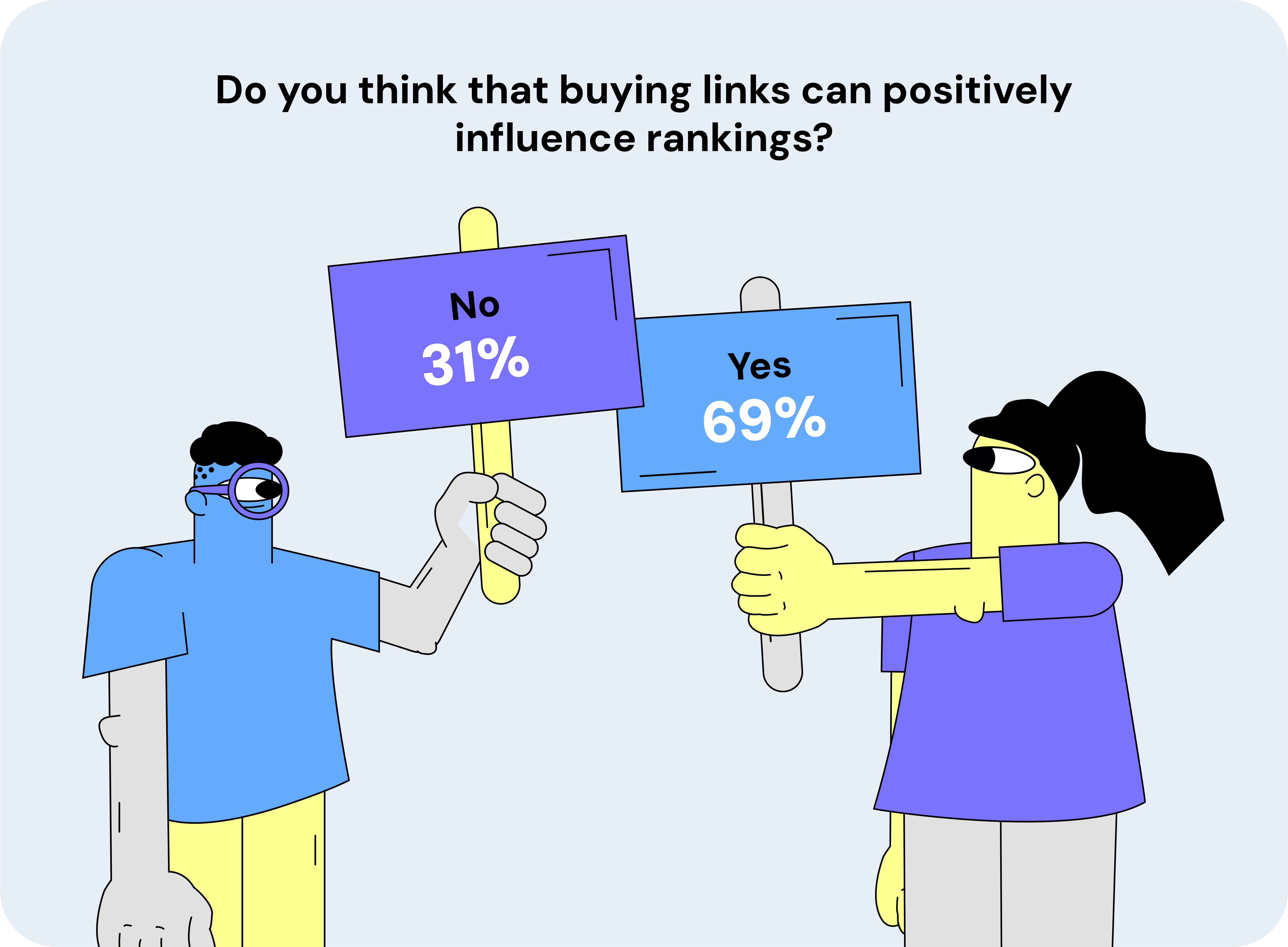
The practice of buying links, a topic often debated in link building, garners mixed opinions regarding its impact on rankings. Most, 69% of SEO professionals, believe purchasing links can positively influence rankings.
However, 31% oppose this view, likely reflecting concerns about the potential risks and ethical implications, as well as the long-term ineffectiveness of such a strategy in light of search engines’ evolving algorithms that penalize unnatural link patterns.

The prevalence of purchasing links in the link-building industry is surprisingly high, with 74.3% of link builders engaging in this practice. Furthermore, the data reveals an average cost of $83 per paid link, offering a quantitative insight into the financial investment involved in this tactic.
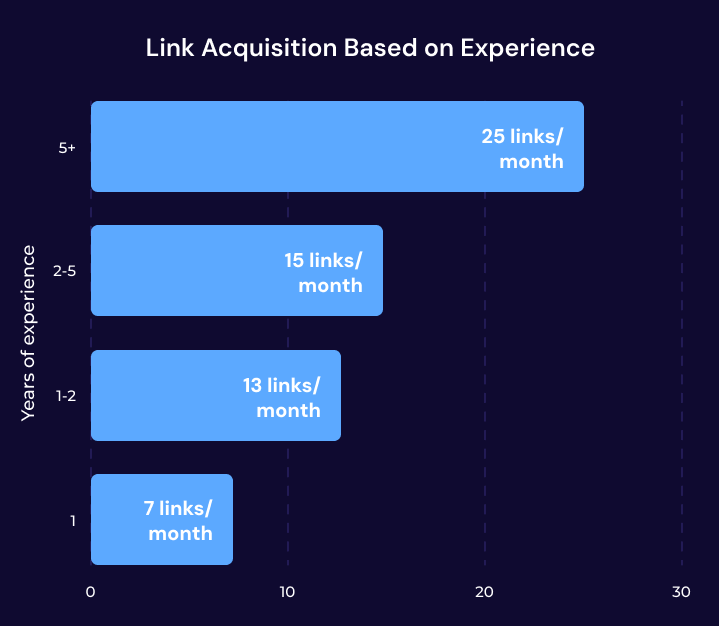
The data shows a clear correlation between the experience level and the link acquisition rate—those with just one year of experience average seven links per month.
As expertise grows to 1-2 years, the average increases to 13 monthly links. Further, professionals with 2-5 years of experience achieve an average of 15 monthly links, reflecting a more advanced understanding and execution of link-building tactics.
The most significant jump is evident in those with over five years of experience, who average 25 monthly links.
The data shows a clear correlation between the experience level and the link acquisition rate—those with just one year of experience average seven links per month.
As expertise grows to 1-2 years, the average increases to 13 monthly links. Further, professionals with 2-5 years of experience achieve an average of 15 monthly links, reflecting a more advanced understanding and execution of link-building tactics.
The most significant jump is evident in those with over five years of experience, who average 25 monthly links.
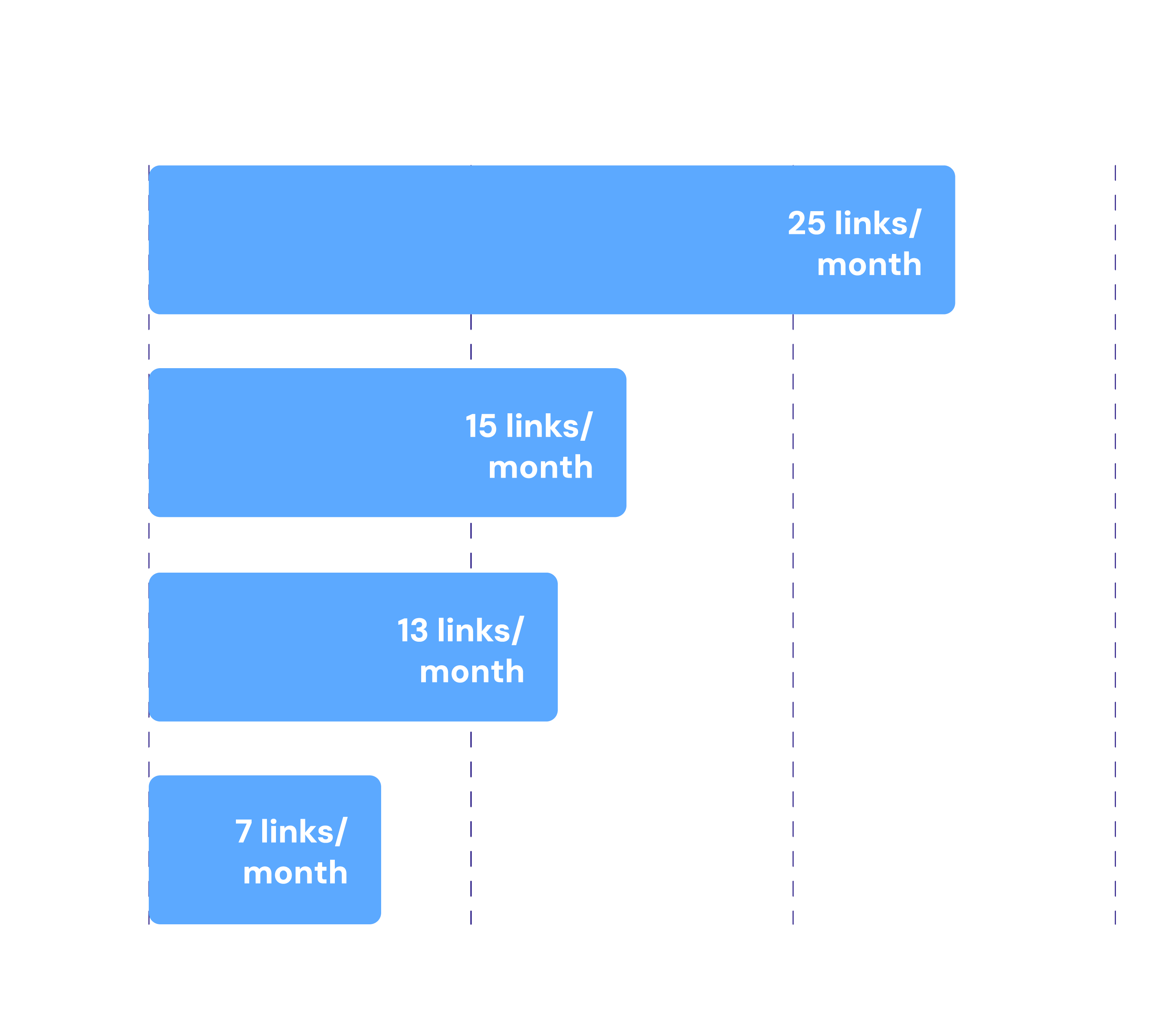
The data shows a clear correlation between the experience level and the link acquisition rate—those with just one year of experience average seven links per month.
As expertise grows to 1-2 years, the average increases to 13 monthly links. Further, professionals with 2-5 years of experience achieve an average of 15 monthly links, reflecting a more advanced understanding and execution of link-building tactics.
The most significant jump is evident in those with over five years of experience, who average 25 monthly links.

As the data demonstrates, the propensity to pay for links in the link-building industry escalates with the increase in experience. Among those with just a year of experience, 68.06% pay for links.
This percentage rises to 74.27% for professionals with 1-2 years of experience, indicating a growing reliance on paid links as a standard part of their strategy. The trend continues with those having 2-5 years of experience, where 75% resort to buying links, reflecting an entrenched practice in their link-building efforts.
The highest incidence is among the most experienced professionals, with over five years in the field, where 81.66% pay for links.
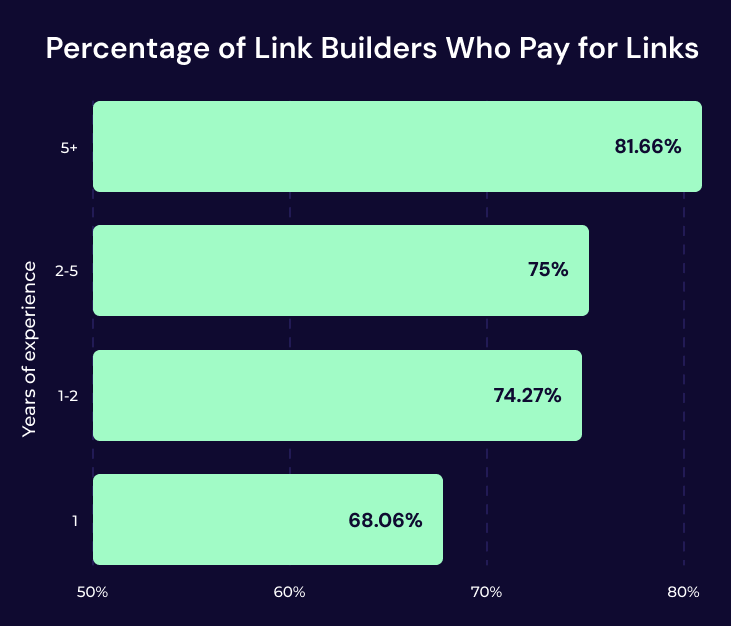
As the data demonstrates, the propensity to pay for links in the link-building industry escalates with the increase in experience. Among those with just a year of experience, 68.06% pay for links.
This percentage rises to 74.27% for professionals with 1-2 years of experience, indicating a growing reliance on paid links as a standard part of their strategy. The trend continues with those having 2-5 years of experience, where 75% resort to buying links, reflecting an entrenched practice in their link-building efforts.
The highest incidence is among the most experienced professionals, with over five years in the field, where 81.66% pay for links.
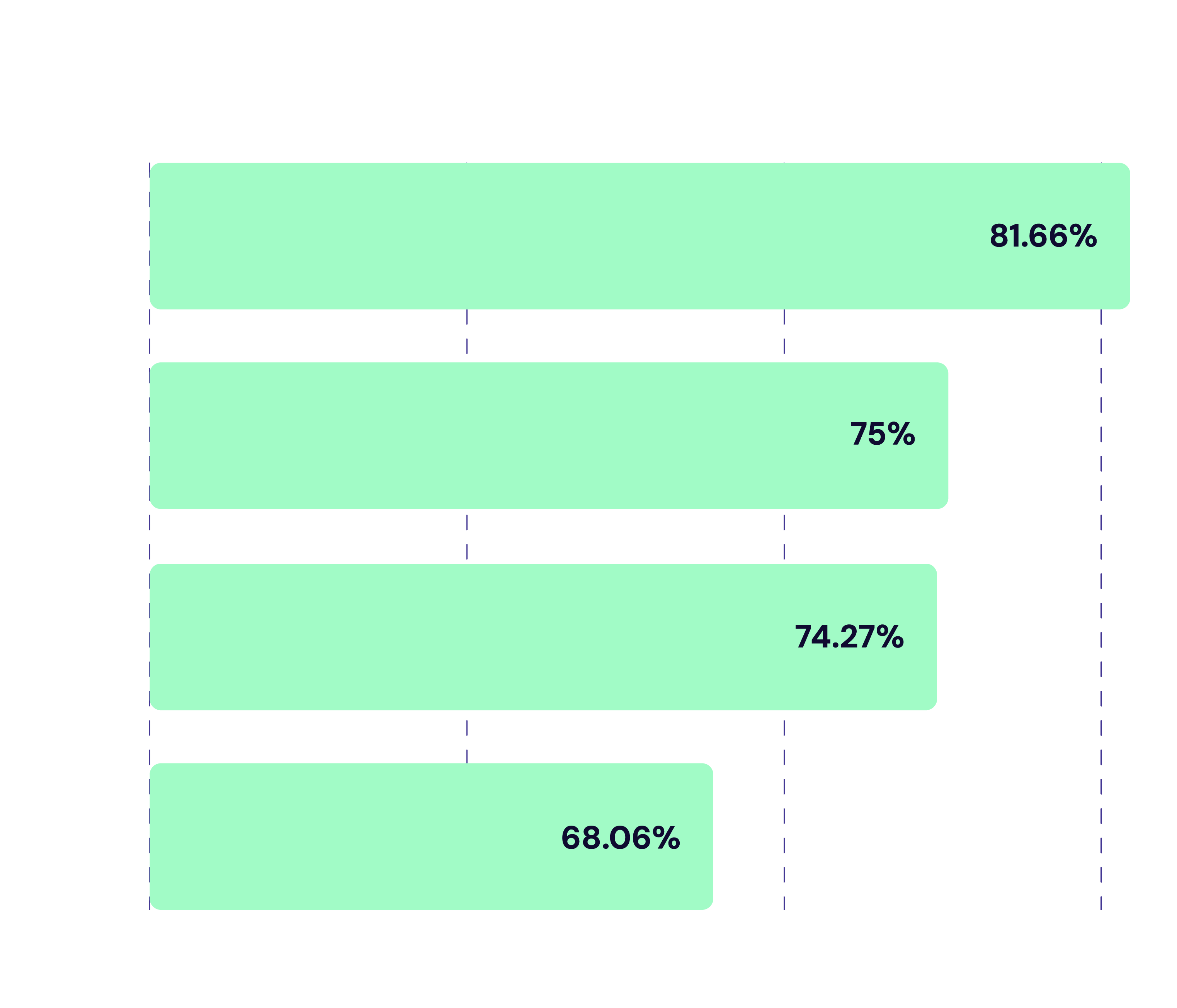
Accurately measuring the authority and quality of a link is crucial, and professionals primarily rely on specific metrics for this evaluation. As 67% of respondents indicated, the Domain Rating (DR) by Ahrefs is the most favored metric.
Following closely, Domain Authority (DA) from Moz is utilized by 42% of the professionals.
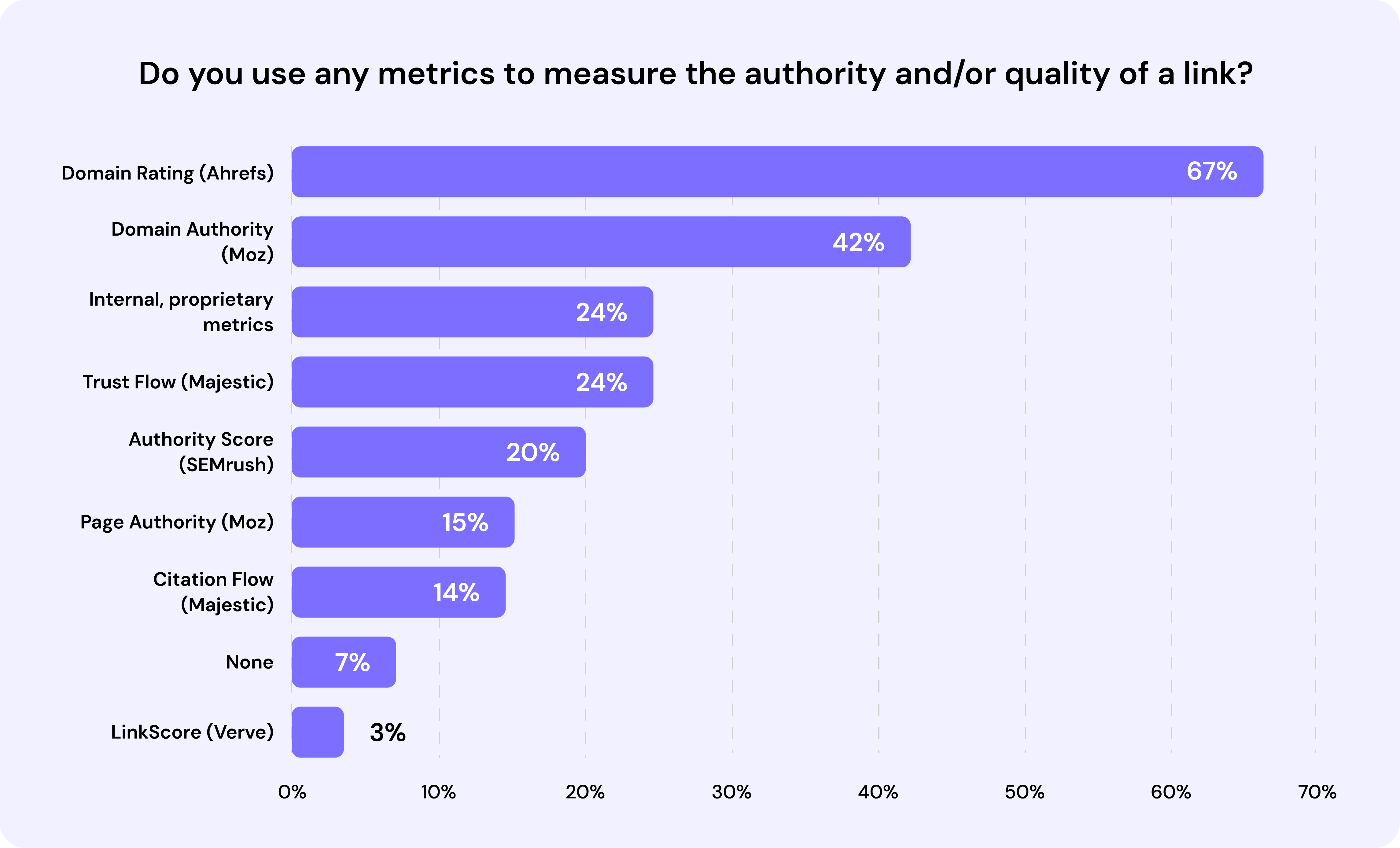
If they were to narrow their preference to a single metric for evaluating link quality, Domain Rating (DR) from Ahrefs emerged as the clear favorite, garnering 44% of the votes. In comparison, Moz’s Domain Authority (DA) was the preferred solitary metric for 18% of respondents, indicating its continued relevance, though overshadowed by DR in this scenario.
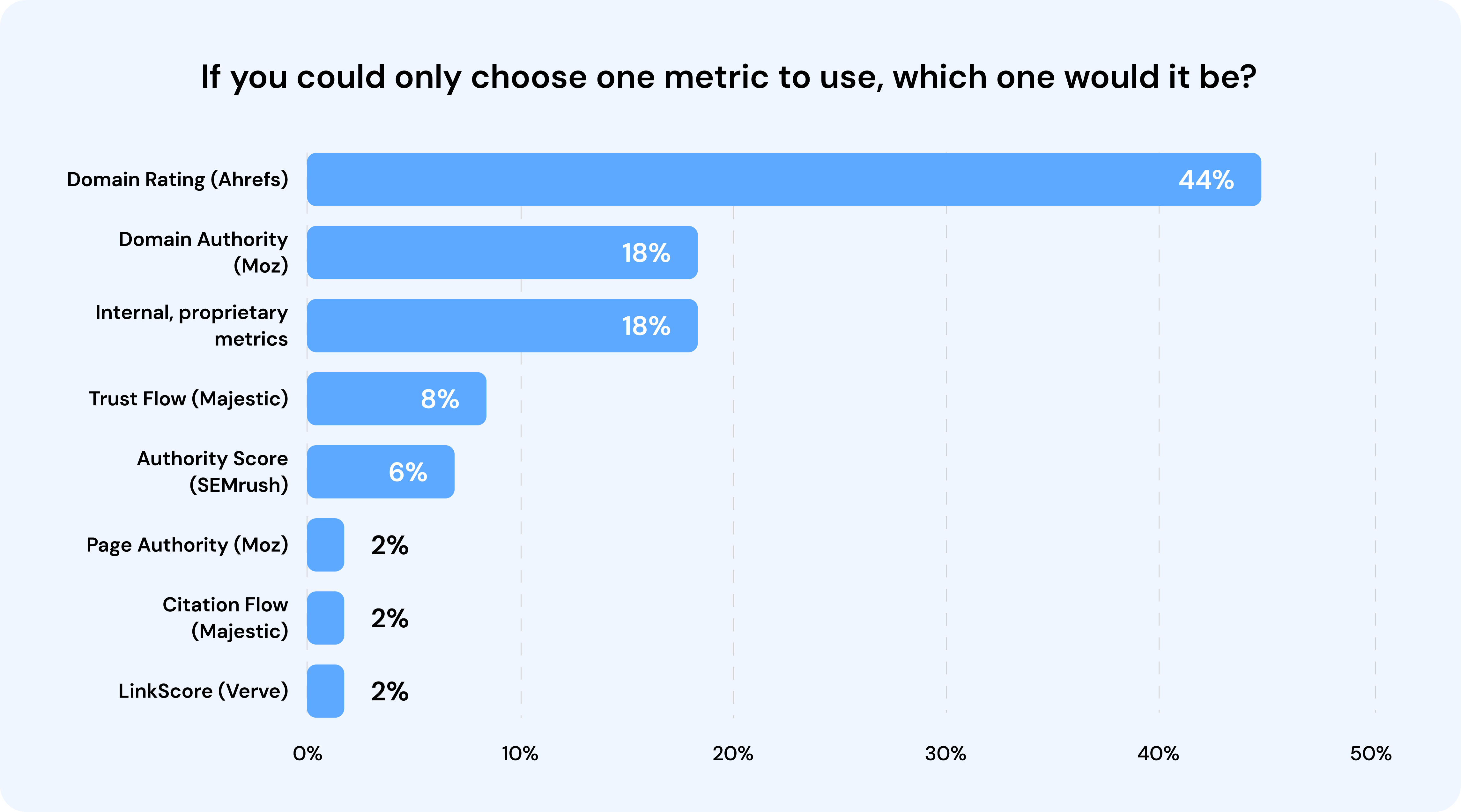
When assessing the effectiveness of link-building strategies, SEO professionals predominantly rely on specific Key Performance Indicators (KPIs). The most prominent metric is search rankings, with 53% of respondents favoring it. Following rankings, search visibility was chosen by 36% as a primary measure, highlighting its importance as an indicator of how visible and prevalent a website is in search results.
The data reveals strong, enduring confidence among SEO professionals in the significance of links as a ranking signal in Google’s algorithms in the future. 94% believe that, even in five years, links will continue to be a critical factor in Google’s ranking criteria.
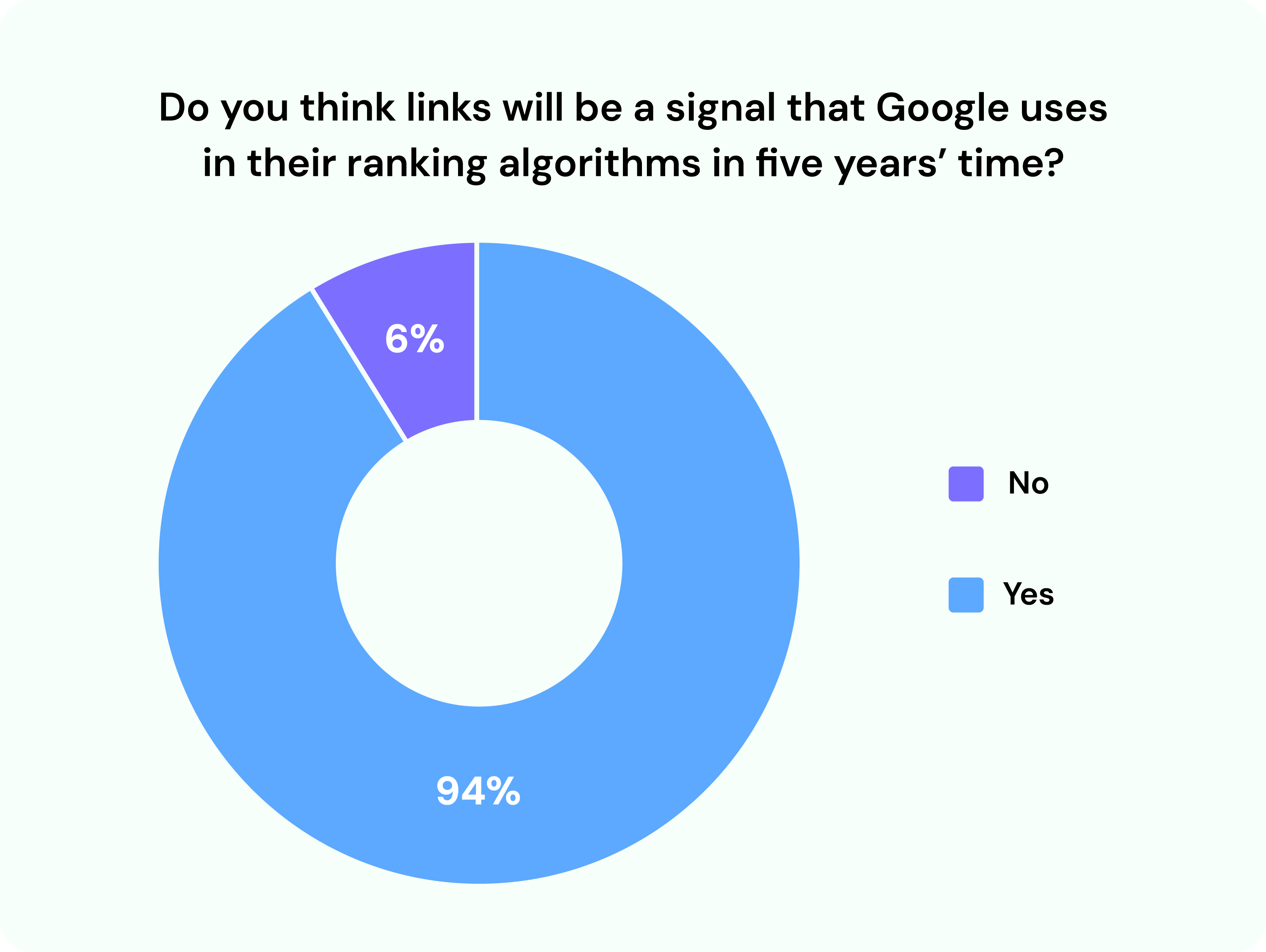
The data reveals strong, enduring confidence among SEO professionals in the significance of links as a ranking signal in Google’s algorithms in the future. 94% believe that, even in five years, links will continue to be a critical factor in Google’s ranking criteria.

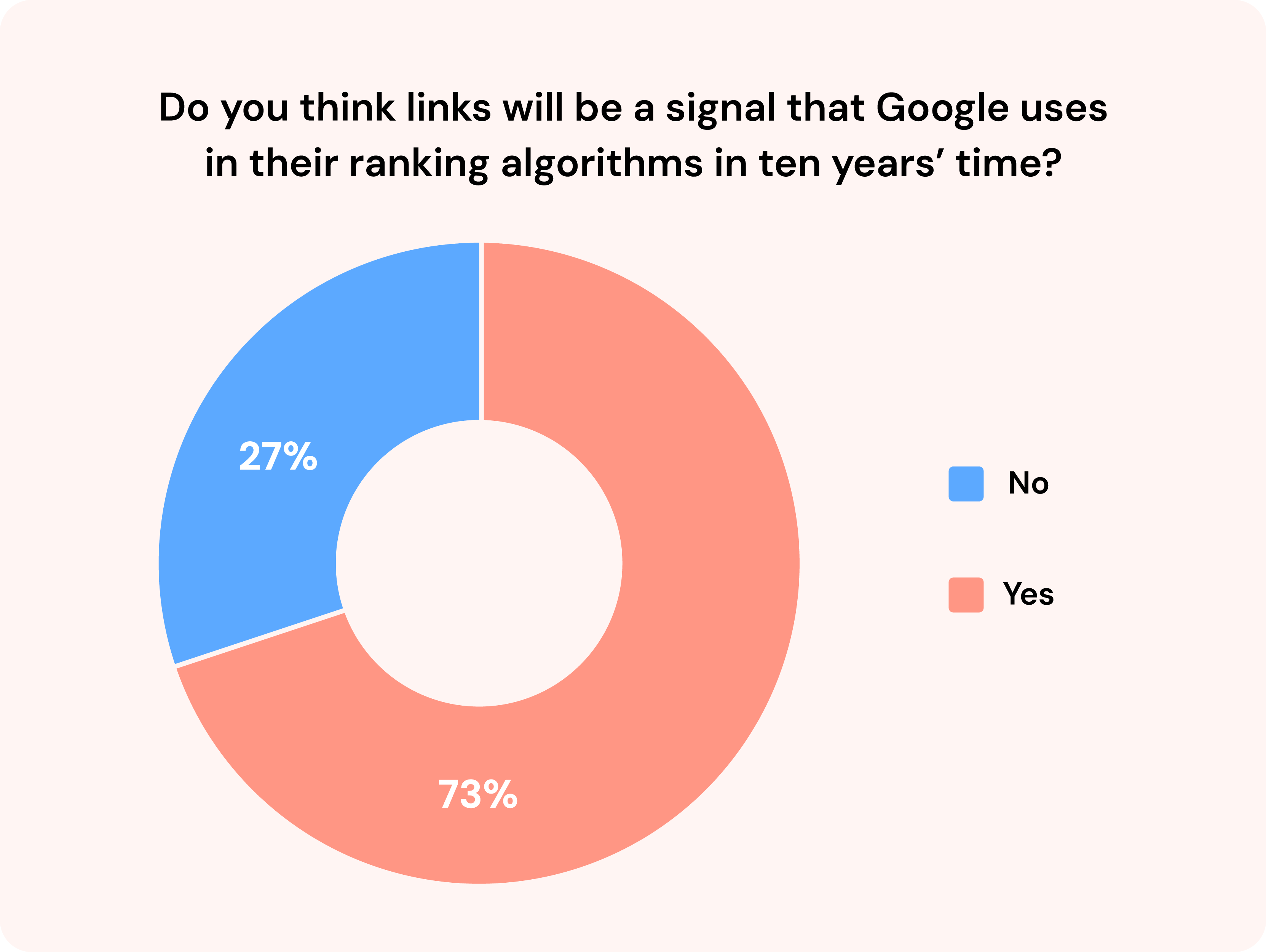
Looking further ahead to ten years, a significant majority, 73%, still maintain this belief, with a slight reduction. This reduction is less indicative of diminishing importance and more suggestive of an industry adapting to potential technological advancements and evolving SEO landscapes. It reflects a positive outlook that, while recognizing the inevitable advancements in search technology, still places considerable value on the role of links, anticipating their adaptation and sustained relevance in an ever-evolving digital world.
Looking further ahead to ten years, a significant majority, 73%, still maintain this belief, with a slight reduction. This reduction is less indicative of diminishing importance and more suggestive of an industry adapting to potential technological advancements and evolving SEO landscapes. It reflects a positive outlook that, while recognizing the inevitable advancements in search technology, still places considerable value on the role of links, anticipating their adaptation and sustained relevance in an ever-evolving digital world.

Looking further ahead to ten years, a significant majority, 73%, still maintain this belief, with a slight reduction. This reduction is less indicative of diminishing importance and more suggestive of an industry adapting to potential technological advancements and evolving SEO landscapes. It reflects a positive outlook that, while recognizing the inevitable advancements in search technology, still places considerable value on the role of links, anticipating their adaptation and sustained relevance in an ever-evolving digital world.

The expected impact of AI tools on link building in the SEO industry reveals a predominantly optimistic view, with a substantial 67.33% of professionals believing that AI will simplify their work.
However, 17.33% feel that AI will not significantly impact their methods. A small percentage, 4.67%, are currently unsure of AI’s role, reflecting the developing state of AI in SEO and its yet-to-be-fully-realized potential. Interestingly, 3.33% fear job displacement due to AI automation.
The expected impact of AI tools on link building in the SEO industry reveals a predominantly optimistic view, with a substantial 67.33% of professionals believing that AI will simplify their work.
However, 17.33% feel that AI will not significantly impact their methods. A small percentage, 4.67%, are currently unsure of AI’s role, reflecting the developing state of AI in SEO and its yet-to-be-fully-realized potential. Interestingly, 3.33% fear job displacement due to AI automation.
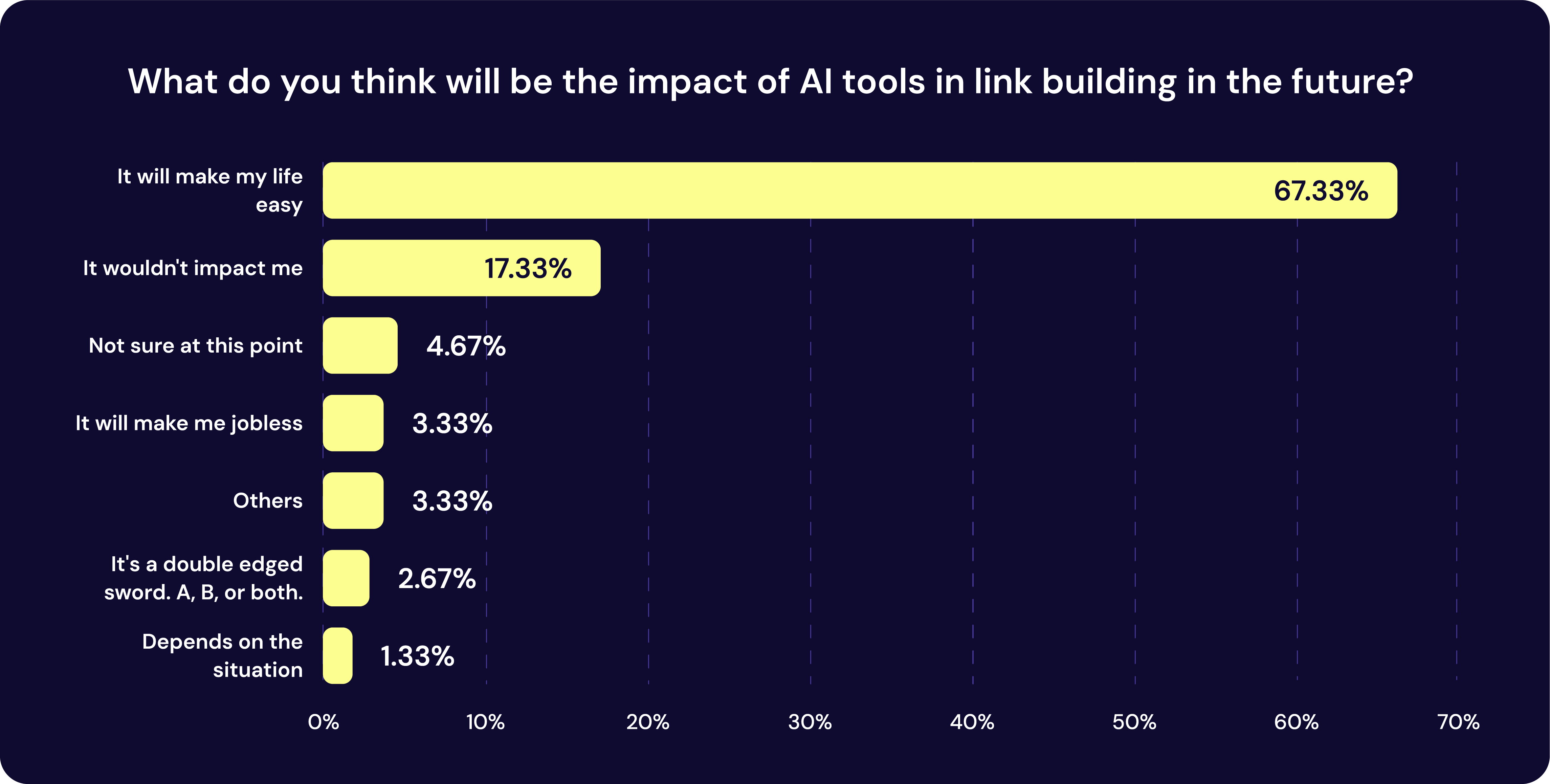
Today, in the world of SEO and link-building, it is essential to have a flexible and adaptable approach toward link-building strategies. The data suggests a shift towards diverse, data-driven approaches, combining traditional methods with new technologies such as AI. While everyone agrees on the value of links, the ways to achieve and measure their effectiveness can vary, making it necessary to tailor the approach. SEO professionals must balance quality and quantity, explore new tools, and adapt to changes in search engine algorithms. Keeping up-to-date and being agile is crucial to successfully enhancing website authority and achieving higher search rankings.